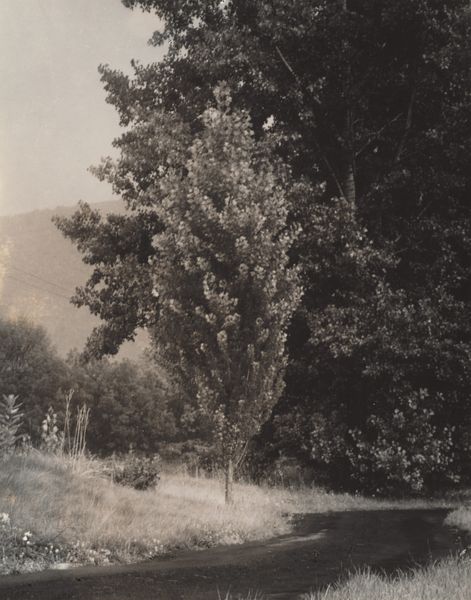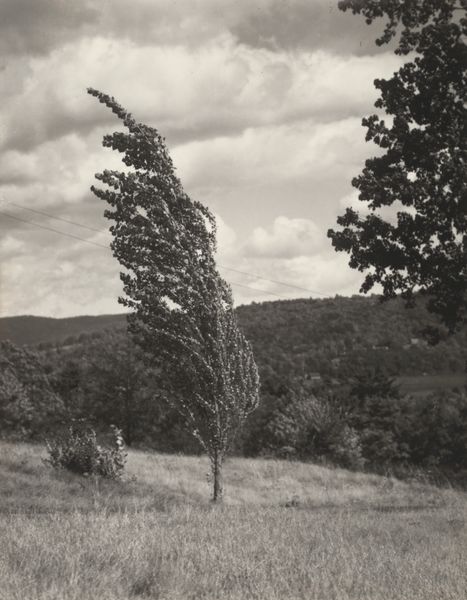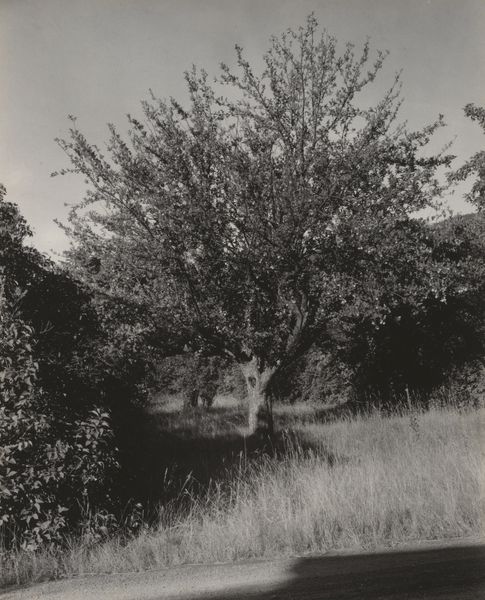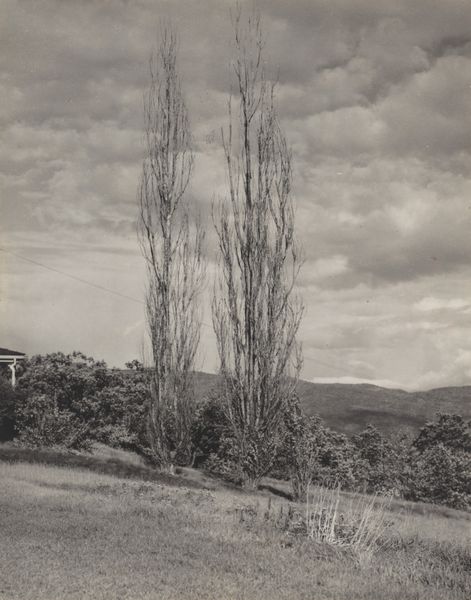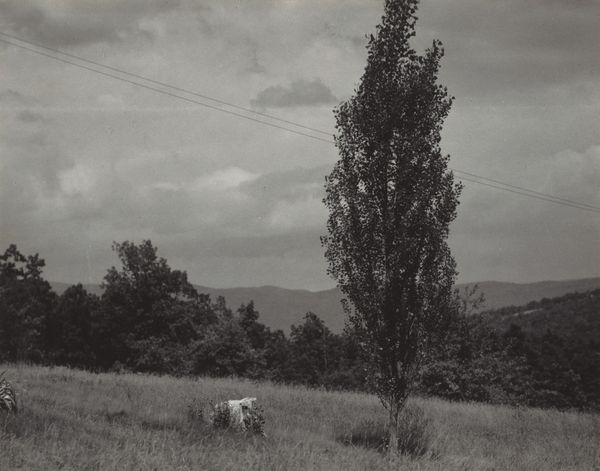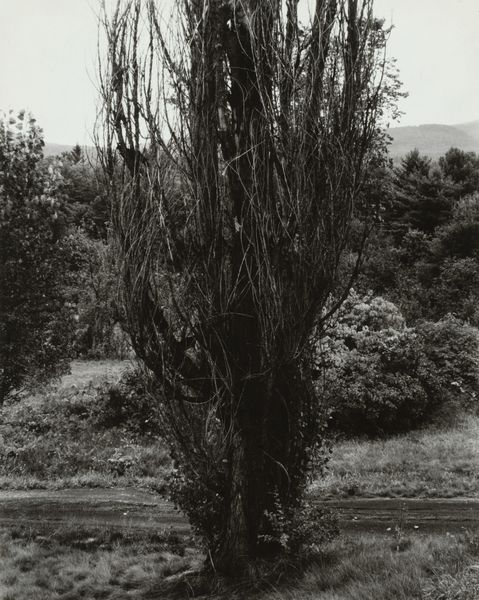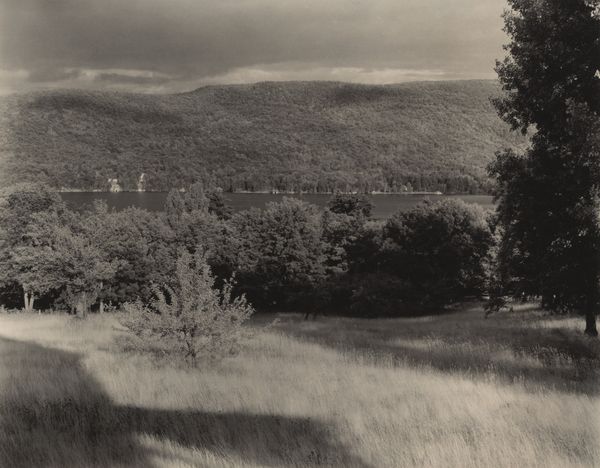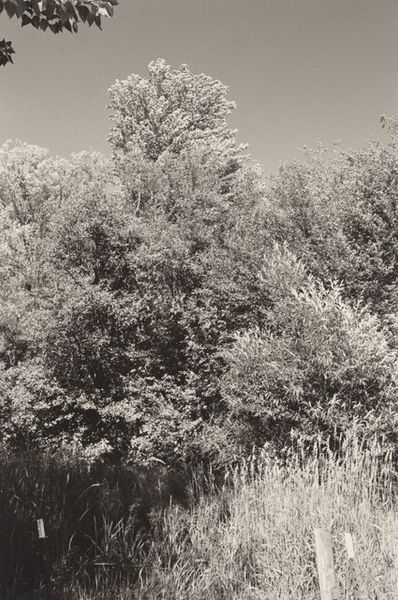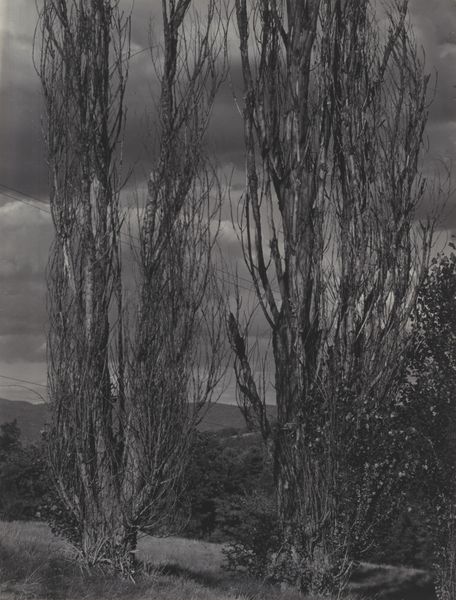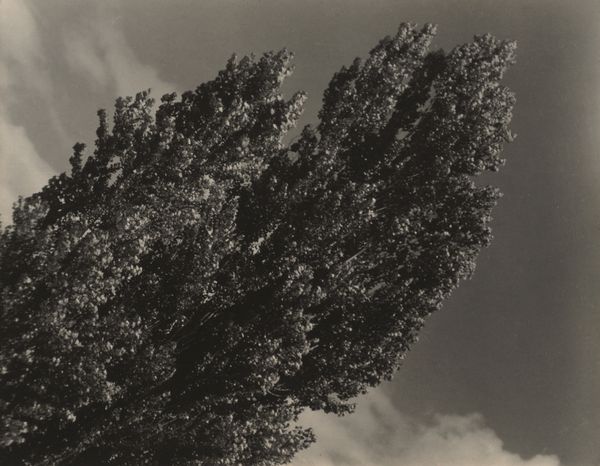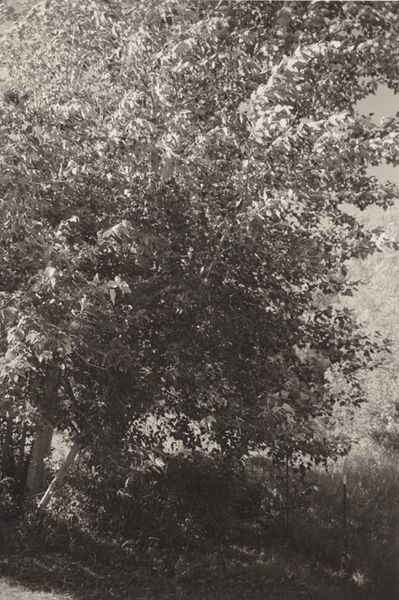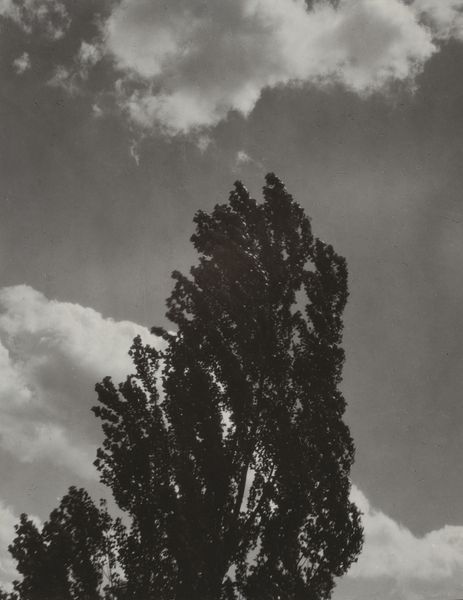
photography, gelatin-silver-print
#
organic
#
organic shape
#
landscape
#
photography
#
gelatin-silver-print
#
monochrome photography
#
modernism
#
realism
#
monochrome
Dimensions: sheet (trimmed to image): 10 × 8.7 cm (3 15/16 × 3 7/16 in.) mount: 31.9 × 25 cm (12 9/16 × 9 13/16 in.)
Copyright: National Gallery of Art: CC0 1.0
Alfred Stieglitz made this photograph, "Poplar—Lake George," using gelatin silver. Here, we see a tree bending in the wind, set against a rural backdrop. In the early 20th century, Stieglitz championed photography as a fine art, challenging the established hierarchy that favored painting. His work reflects a broader cultural shift, as photography gained recognition within art institutions and salons. Stieglitz was instrumental in this movement through his "291" gallery. The image evokes a sense of naturalism and simplicity, yet it's also a self-conscious artistic statement. Stieglitz deliberately chose photography to challenge the established art world. He sought to elevate it to the same level as painting. By focusing on such an everyday scene, was he trying to democratize art? To fully understand this work, we might explore writings of the time on photography as art, exhibition catalogs, and the history of the institutions where Stieglitz exhibited. Art history helps us to see how artworks reflect, and sometimes challenge, the norms of their time.
Comments
No comments
Be the first to comment and join the conversation on the ultimate creative platform.
